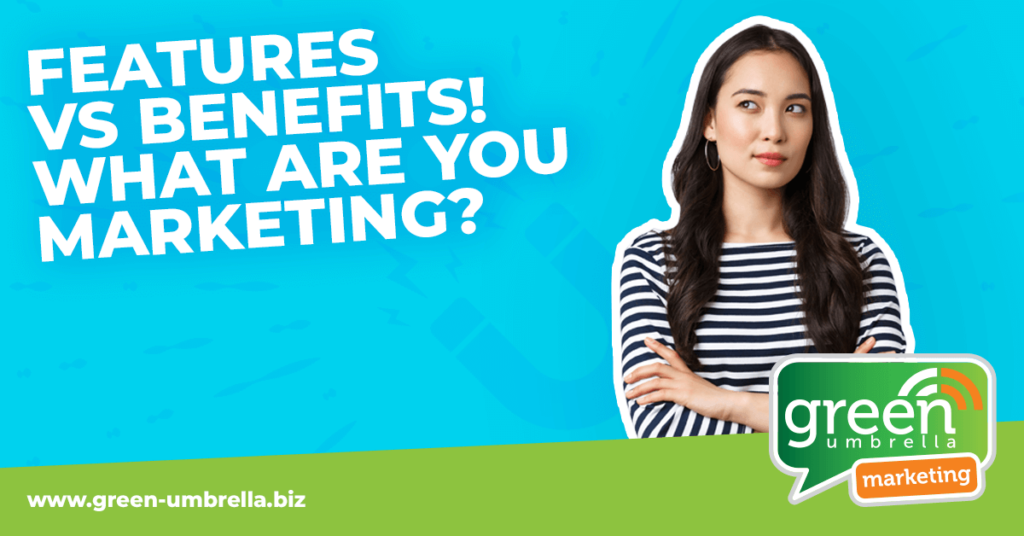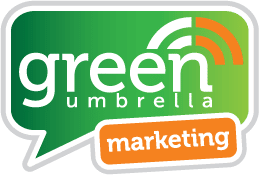Features vs. Benefits in Social Media Marketing

Features vs. Benefits in Social Media Marketing

Nothing is more powerful in marketing, and especially in social media marketing than promoting the benefits of your products or services over their features. And yet, so many business owners confuse the two or struggle to make distinctions. Figuring out the differences and using them together (in the right way) has the potential to unlock unparalleled success. Both elements play pivotal roles in captivating your audience; it’s just a case of comprehending the nuances of your features vs benefits in social media marketing and leveraging them effectively to drive engagement and conversions.
Features vs. Benefits: Where’s the difference?
Features are characteristics or attributes of your product or service. They offer specific descriptors of what the offering is or can do. For example, the features of a social media management tool would include scheduling posts, analytics tracking, or content curation capabilities.
Benefits clarify how those features directly address the needs or desires of your audience. They highlight the true value and the positive outcomes that can be expected. Again, using a social media management tool as an example, benefits could encompass saving time, efficiency, increased brand visibility, or enhanced audience engagement.
Why Understanding the Difference Matters
I used the word nuance in my opening paragraph because the differences are subtle and yet powerful. Social media is a game of communication that moves people towards something, an action and sometimes even simply a feeling or emotion. Marketing the difference between features and benefits can benefit your overall strategy for the following reasons.
- Client-Centred Communication: Knowing the difference between features and benefits enables you as a marketer to craft your social media marketing messages in a way that resonates with your audience on a deeper level. By focusing on benefits, you can speak directly to your audience’s pain points or aspirations, creating stronger connections and driving engagement.
- Emotional Connection: Benefits have the power to evoke emotions; in comparison, features tend to evoke a more logical response. Emotionally compelling content is more likely to resonate with audiences and inspire action, whether it’s making a purchase, signing up for a service, or sharing content with others.
- Clear Value Proposition: Highlighting the benefits of your product or service clarifies your value proposition, making it easier for prospective clients and customers to understand why they should choose your option over a competitor. Emphasising your tangible outcomes and advantages can differentiate your offering and drive conversion rates.
- Linking Their Problem With Your Solution: Benefits directly address the problems or challenges faced by your audience, presenting your solution in a compelling manner. This alignment between the needs of your audience and the benefits your product offers creates trust and credibility, positioning you as a reliable brand of choice when it comes to addressing their concerns.
How To Use Features Vs Benefits In Social Media Marketing Effectively
- Audience Research: Invest time in understanding your audience’s demographics, psychographics, and pain points. This insight will direct your messaging and allow you to tailor benefits that resonate with specific needs and desires.
- Feature-Benefit Mapping: Create a comprehensive list of product features; next to each one, add corresponding benefits. This exercise will help you articulate your value proposition more effectively and ensure consistency across all of your marketing channels.
- Compelling Storytelling: I’ve been saying for a long time that we need to use stories when it comes to social media marketing. Incorporate your benefits into your storytelling efforts to create narratives that captivate and resonate with your audience on an emotional level. Using real-life examples, testimonials, or case studies works well to illustrate how your product or service has positively impacted others.
- Test What Works: Experiment with different variations in your messaging to understand which combination of features and benefits yields the highest engagement and conversion rates. Refining your approach and optimising your social media content efforts over time is important.
It’s not discussed enough, the truth is that the distinction between features and benefits lies at the heart of effective social media marketing and content creation. By understanding the uniqueness of each and strategically leveraging them to align with the needs of your audience, you can drive meaningful results and create lasting connections with your audience that ultimately lead to sales.

Christina Robinson is the Managing Director of Green Umbrella Marketing. She provides Social Media Training and Coaching for a range of clients throughout the UK.
Share this!

